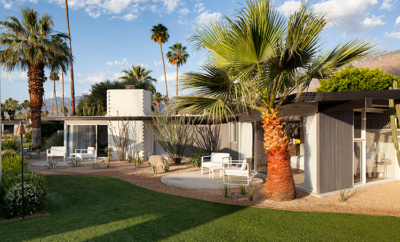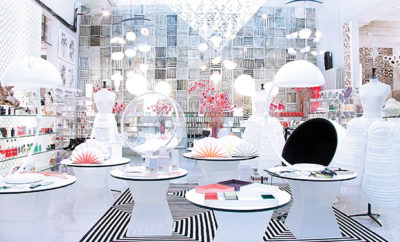
Design Destination
Chicago: Design Stop
DESPITE ITS DENSITY, Chicago is a metropolis that feels uniquely breathable. Maybe that’s because the city opens onto the vast emptiness of Lake Michigan on one side and the vast emptiness of the prairie on the other. Maybe it’s because “the stakes aren’t as high in Chicago,” as Mark Kelly, commissioner of the city’s Department of Cultural Affairs and Special Events, puts it—all that stands between Chicagoans’ aspirations and their realization is a little bit of hard work. The birthplace of the skyscraper, the city has long been home to a busy community of architects and designers, from Daniel Burnham and Louis Sullivan, through Ludwig Mies van der Rohe, to contemporary luminaries such as Carol Ross Barney and Jeanne Gang. A lot is happening in the Second City.
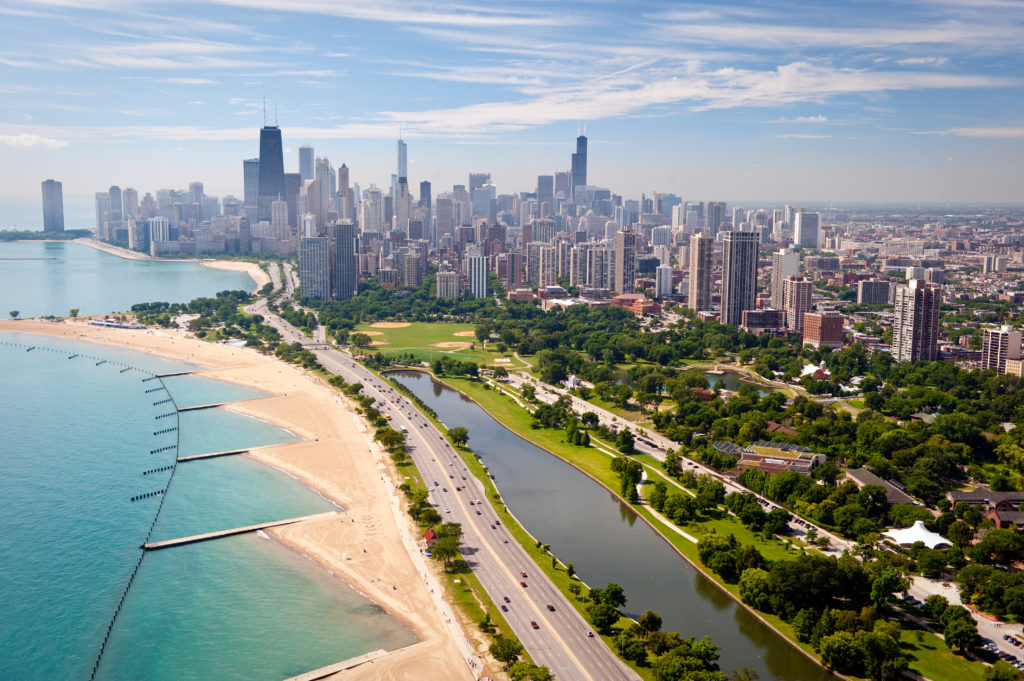
An aerial view of the Chicago beachfront. CITY OF CHICAGO PHOTO/COURTESY OF CHOOSE CHICAGO
Sightseeing
Parks
THE MOST POPULAR TOURIST DESTINATION in the Midwest, Millennium Park boasts not one but two structures by Frank Gehry: the Jay Pritzker Pavilion, a bandshell whose proscenium explodes outward and upward in undulating ribbons of steel, as well as the snaking BP Bridge, floating over Columbus Drive nearby. The polished surface of Anish Kapoor’s Cloud Gate—popularly known as the Bean—makes for a massive funhouse mirror, while the nearby Crown Fountain is a perfect place for the young or young-at-heart to frolic on hot summer days.
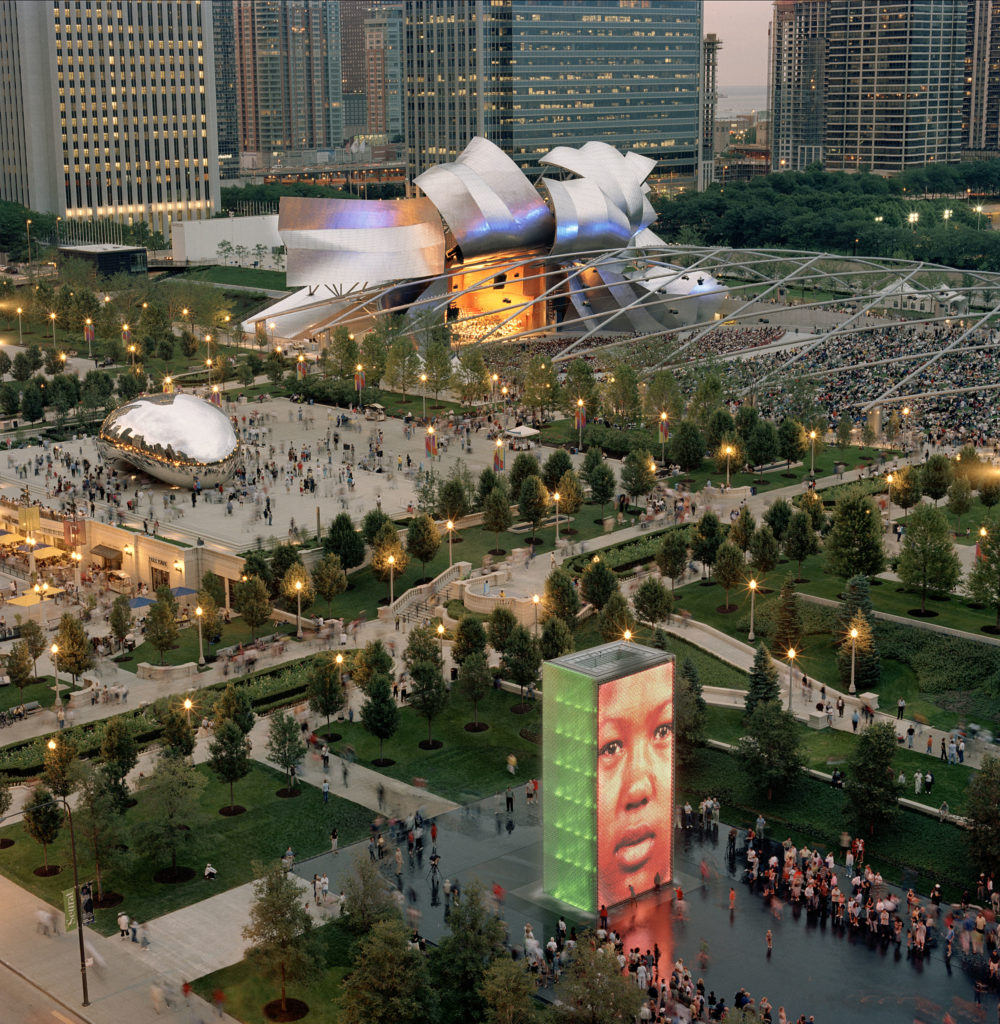
Millennium Park Opening Night by Terry Evans, 2004, showing the Jay Pritzker Pavilion, designed by Frank Gehry, and Cloud Gate, designed by Anish Kapoor. COURTESY OF CITY OF CHICAGO, DEPARTMENT OF CULTURAL AFFAIRS AND SPECIAL EVENTS
A few blocks northwest is the Chicago Riverwalk, “a new recreational frontier,” according to Mayor Rahm Emanuel, designed by Sasaki and Ross Barney Architects and lined with trees, tiki huts, and kayak launches, as well as restaurants in repurposed shipping containers. The park follows the Chicago River west, passing under eight rumbling wrought-iron bridges, and offers prodigious views of high-rises by Ricardo Bofill, Studio Gang, and Bertrand Goldberg.
Architecture
IN AN INTERNATIONAL STYLE BUILDING that abuts the Riverwalk—one of Mies van der Rohe’s last projects—the Chicago Architecture Foundation has just opened a new center. Adrian Smith + Gordon Gill Architecture subtly altered the lobby and mezzanine levels to make room for a display of monumental 3-D-printed models that chart the evolution of the skyscraper, from Chicago’s Home Insurance Building (1889) to the firm’s own Jeddah Tower, currently under construction in Saudi Arabia.
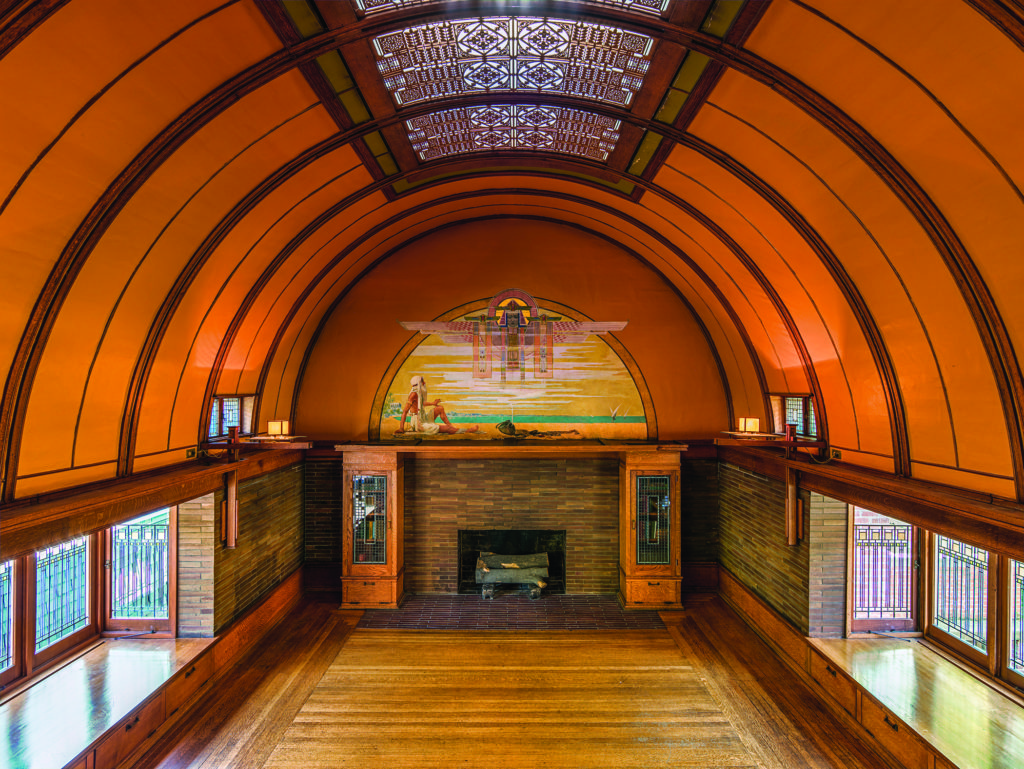
Children’s playroom inside the Frank Lloyd Wright Home and Studio, 1889–1898, in Oak Park, Illinois. JAMES CAULFIELD PHOTO/COURTESY OF FRANK LLOYD WRIGHT TRUST
Though architectural enthusiasts could easily spend all their time downtown, venturing farther afield pays off. Consider taking a train to Oak Park. This quiet suburb, the birthplace of Ernest Hemingway, has the largest collection of Frank Lloyd Wright– designed buildings in the world, including his home and studio (1889–1898), and the recently renovated Unity Temple.

Exterior of the McCormick Tribune Campus Center, designed by Rem Koolhaas for OMA, at the Illinois Institute of Technology, 2003. COURTESY OF ILLINOIS INSTITUTE OF TECHNOLOGY
Chicago also has a couple of campuses that were designed almost exclusively by single modernist architects: Illinois Institute of Technology, home to the world’s largest collection of Mies van der Rohe buildings, including his only religious structure, cheekily nicknamed the “God Box”; and University of Illinois at Chicago, designed in rugged brutalist style by Walter Netsch for Skidmore, Owings + Merrill.
Fairs and Institutions
IF YOU’RE IN TOWN THIS FALL, try to schedule your visit to coincide with the twenty-fifth edition of SOFA, the Sculptural Objects Functional Art and Design Fair, which runs November 1–4 on Navy Pier. Aside from the eighty-some international dealers showing their finest wares, you’ll find a long list of compelling lectures, craft demos, and workshops, as well as special exhibitions.
The centrally located Art Institute of Chicago is the éminence grise of art and design in the Midwest and shouldn’t be missed, but a trio of geographically marginal institutions/anti-institutions also deserve a visit: the Graham Foundation, Alphawood Foundation Chicago’s Wrightwood 659, and Theaster Gates’s Rebuild Foundation.
The Graham Foundation, in the wealthy Gold Coast neighborhood to the north, is renowned for the scholarly shows staged in its historic Richard E. Schmidt building and for the generous grants it doles out to individuals and organizations (more than half a million dollars has already been granted in 2018) for making films, exhibitions, books, and the like.
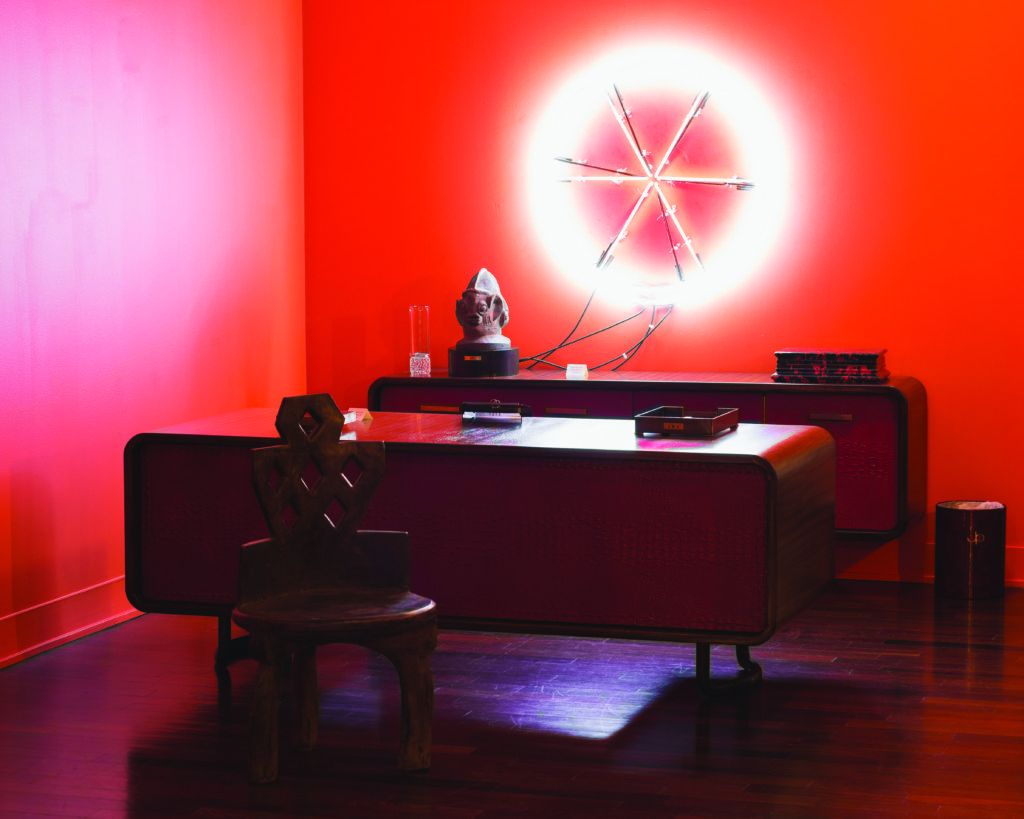
Installation view of A Johnson Publishing Story, on view at the Stony Island Arts Bank. DAVID SAMPSON PHOTO / COURTESY OF REBUILD FOUNDATION
Nearby, in Lincoln Park, another philanthropic organization will soon have a new exhibition space. The Alphawood Foundation Chicago is opening Wrightwood 659 this fall in a 1920s brick building redesigned by Tadao Ando to incorporate a concrete ziggurat rising in the void left by four removed floors. Twice-yearly shows will focus on architecture and socially engaged art.
Swing south, past the future home of the Obama Presidential Center in Jackson Park, and you’ll find the dominion of Chicago artist Theaster Gates and his Rebuild Foundation. Gates has invested a lot of time and money into his hometown, particularly on the South Side, where he has bought up a slew of properties and remade them into such things as community housing and a cinema. One of the most impressive transformations has seen a dilapidated former savings and loan building blossom into the Stony Island Arts Bank, a black culture–focused center with gallery spaces, a library, and lounge currently appointed with faux alligator vinyl furnishings by Arthur Elrod from the offices of Jet and Ebony magazines.
A Gallery and an Auction House
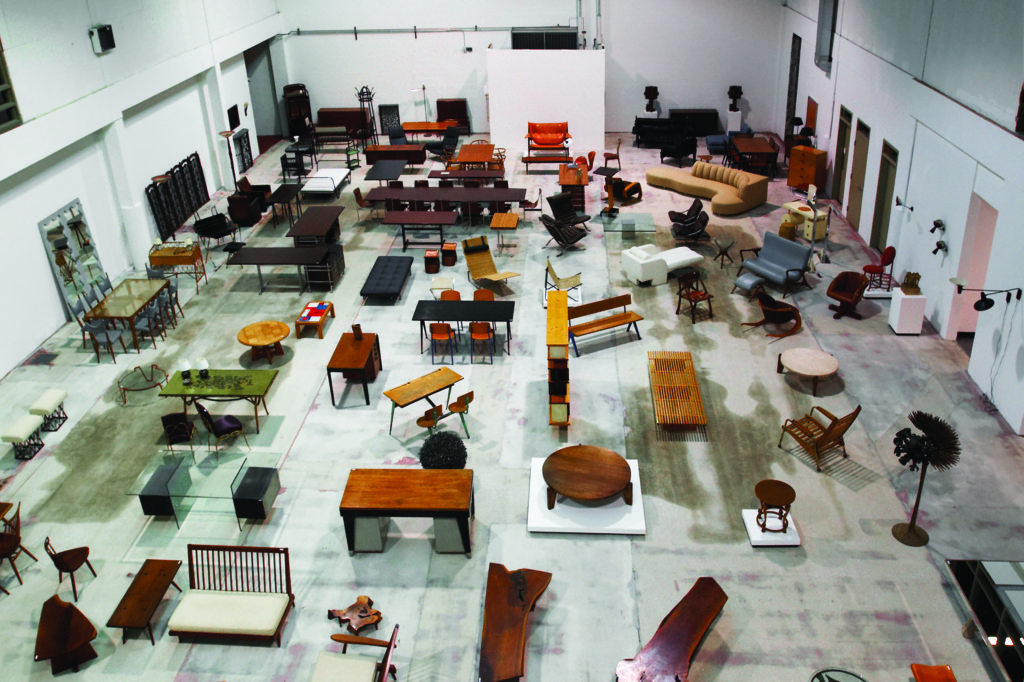
Bird’s-eye view of the selection at Wright’s gallery space. COURTESY OF WRIGHT
LOCATED JUST OUTSIDE THE WEST LOOP, Wright has been the internationally known auction source for modern and contemporary furnishings and art since 2000, when founder Richard Wright’s beautifully produced catalogues and scholarly approach helped make mid-twentieth-century design a serious collecting category. Another pioneer of the upper strata of that market was local dealer Lawrence Converso, whose eponymous gallery—while headquartered in Chicago—has showrooms in New York and Los Angeles. To hear Converso director Michael Graham tell it, before Wright and his peers brought some order to the scene, “reintroducing forgotten [modern] designers to a market . . . was like the Wild West.”
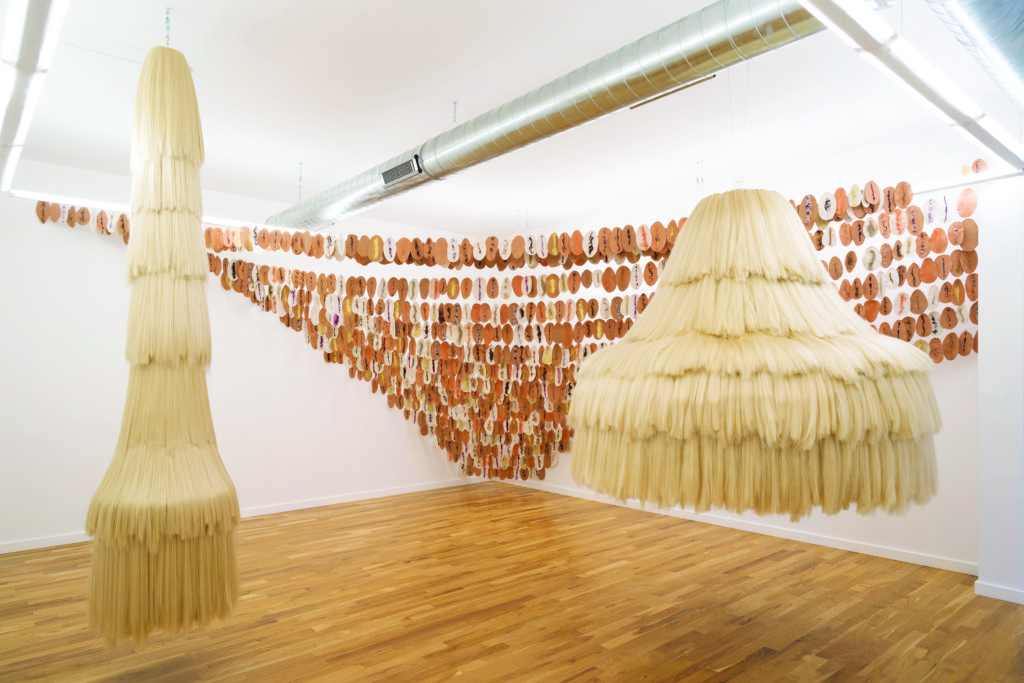
Tanya Aguiñiga’s work installed at Volume Gallery. COURTESY OF VOLUME GALLERY
Not far away in Ukrainian Village, is Volume Gallery, which is a regular at fairs such as Design Miami/ and FOG in San Francisco. The gallery’s principals, Claire Warner and Sam Vinz, are evangelists for a sophisticated blend of discipline-bridging art/ design, and help support their stable of creators— Jonathan Nesci, Snarkitecture, Luftwerk, and Tanya Aguiñiga among them—by co-producing limited-edition collections.
Shopping
MORLEN SINOWAY—whose Fulton Market showroom is full of furniture, silverware, photographs, and rugs, as well as sculptures by the proprietor himself—has cachet in the city as a supporter of under-recognized makers. Until 2016, his anti-NeoCon Gorilla Truck Show exhibited the work of independent artists and designers in Ryder or U-Haul trucks parked outside his gallery during the annual industry fair at theMART (formerly the Merchandise Mart).
Following the L lines north from theMART, you’ll come to the River North Design District. For nearly thirty years, the neighborhood— which is home to Minotti, Cassina, and Poltrona Frau showrooms—has been anchored by Luminaire, the Miami-based purveyor of high- end furnishings and appliances. The company’s tastefully arranged display in its three-floor, timber-framed loft fulfills co-founder Nasir Kassamali’s teenage dream of building a temple to divine design.
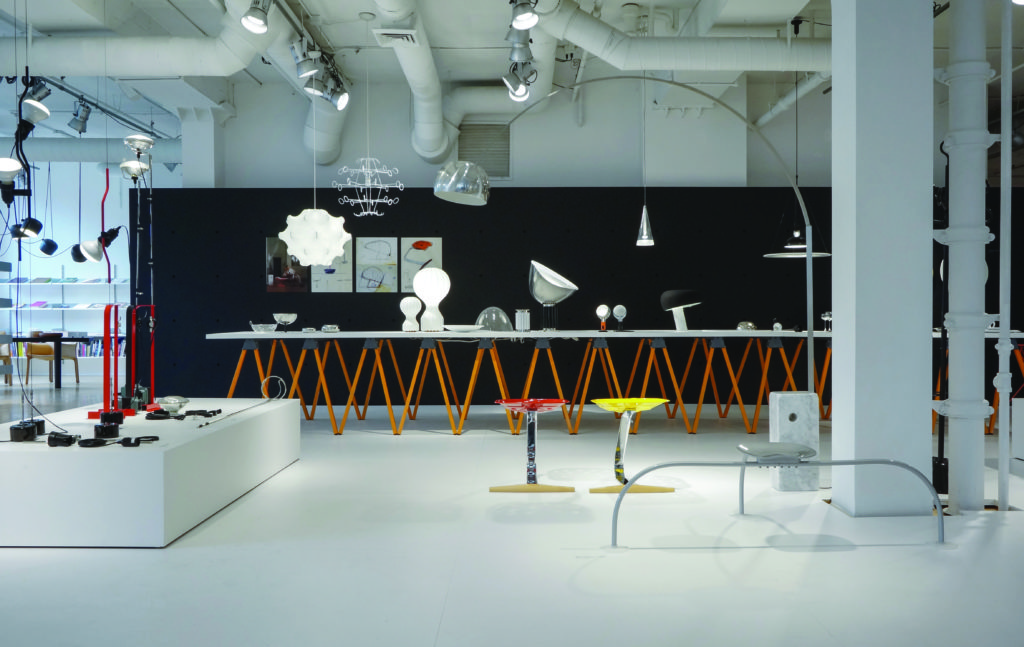
Works by Achille Castiglioni in Luminaire’s third-floor gallery. COURTESY OF LUMINAIRE
And though it isn’t generally thought of as a couture capital, Chicago does possess one trend-setter to make modern-day Chanels bow and scrape: Ikram Goldman, whose eponymous boutique—an eye-catching, cherry-red building just off the Magnificent Mile section of Michigan Avenue—has stolen many ladies’ hearts, including that of Michelle Obama, with its carefully picked selection of clothes from Givenchy, Nina Ricci, Yohji Yamamoto, and other creators of finery.
Dining
THE TWELVE-BLOCK “RESTAURANT ROW” in the West Loop, though relatively young, is one of the most famous gastronomy hubs in the world. A newer establishment is Proxi, designed by New York firm Meyer Davis in a style that plays off the industrial chic of the printing company that used to occupy the space.
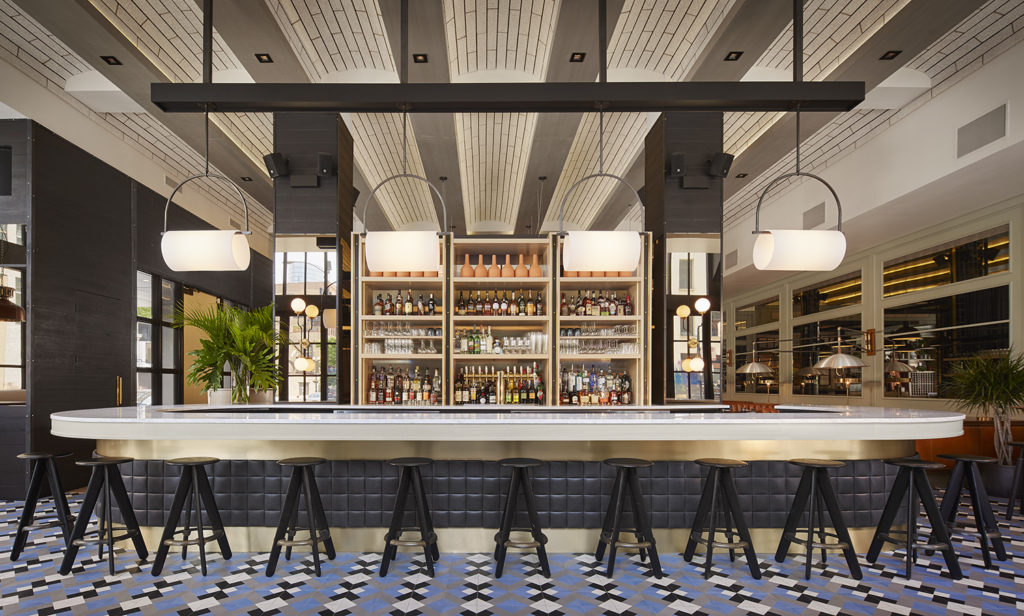
The bar at Proxi restaurant. DAVID BURKE PHOTO
Creating some buzz in River North is Pacific Standard Time, the latest offering from One Off Hospitality Group. This lively, cafeteria-size eatery serves light, California-inspired cuisine. Parts and Labor Design created the interior, which is heavy on white tile and blond wood, with a layout that directs diners’ attention to the chefs milling in the open kitchen with its pair of wood-fired ovens.
And then there’s Kimski. A Korean and Polish street food fusion joint adjacent to the classic Bridgeport tavern and liquor store Maria’s, Kimski was the brainchild of homegrown publisher and arts supporter Ed Marszewski. Learn about Maria’s colorful maître d’ (she’s the woman in the portrait on the tavern’s wall) while munching on Kimski’s chef Won Kim’s kimchi-and-cheese-curd-covered fries and sipping one of five hundred craft beers.
Lodging
IF YOU’RE KEEN TO BE AT THE CENTER of the action, you could do worse than the Chicago Athletic Association Hotel on Michigan Avenue. Built in 1893, the same year the World’s Fair opened, the grandiose Gilded Age building, designed by Henry Ives Cobb, was home to an exclusive men’s athletic club that folded in 2007.
It reopened in 2015 as a four-star hotel, with its German millwork, original stained-glass windows, and stalactite light fixtures reinvigorated by the interior design firm Roman and Williams. A veritable city within a city, the hotel encompasses five bars, including a rooftop space with magnificent views across Millennium Park and the lake.
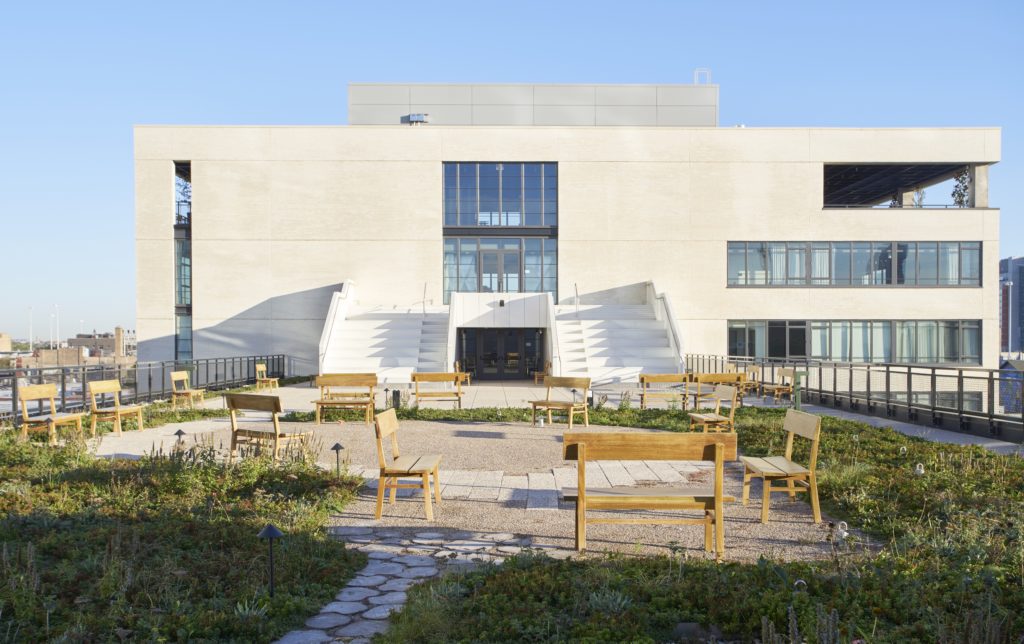
The Ace Hotel Chicago. MIKE SCHWARTZ PHOTO/COURTESY OF ACE HOTEL CHICAGO
Ace Hotel Chicago in the fast-developing West Loop channels a very different time period. With interiors created in collaboration with Los Angeles–based Commune Design and Volume Gallery, the hotel takes its cue from Chicago’s New Bauhaus scene and is filled with bespoke furnishings such as an Anni Albers–esque woven screen by Christy Matson in the lobby, built-in plywood and tubular steel furnishings in the rooms, and McKenzie and Keim lighting fixtures in two archly named meeting spaces, Form and Function.
Itinerary
Day 1
Morning in Millennium Park and at Art Institute
Lunch at Cindy’s at the Chicago Athletic Association Hotel
First Lady Chicago River architectural cruise (90 mins), then walk to SOFA on Navy Pier (if SOFA isn’t running, head up the Magnificent Mile to Ikram, or check out the River North Design District)
Dinner and drinks at Proxi
Day 2
Brunch at Pacific Standard Time
Frank Lloyd Wright Trust tour(s) in Oak Park
Stops at Wright auctions or Volume Gallery, and at Morlen Sinoway Atelier on your way back into the city
Kimski for a bite, then finish out the night at Maria’s
Day 3
Brunch at Robust Coffee Lounge
Stony Island Arts Bank then bus to Illinois Institute of Technology
Dinner in the West Loop, drinks at Punch House in Pilsen



